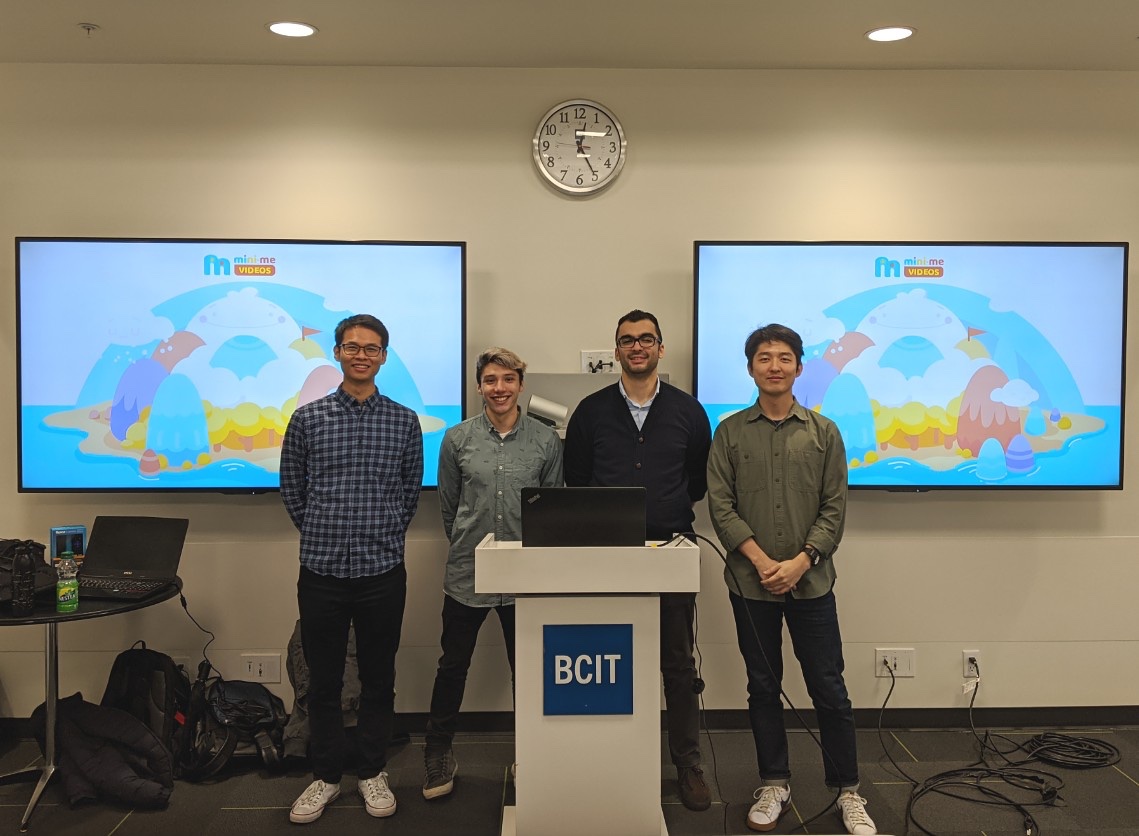There’s nothing that better prepares you for working on a client project than working on a client project. That’s why BCIT Computing students work on over a hundred actual client projects every year through the Industry Sponsored Student Project program (ISSP).
A Computer Systems Technology (CST) project team recently took on a project for airG. airG is a Vancouver-based company with millions of people all over the world using its products to stay informed, entertained, and connected.
The company has a great “Mini-Me” website which provides access to children’s shows. Its niche is safe content in a trusted space but they wanted the content to be available for streaming via Roku app.
“I was impressed with how organized the BCIT team was,” says John Shwaluk, airG Senior Lead Architect and project client. “They hit the ground running – it was clear from our first meeting that they had thoroughly read the project requirements and had come well prepared.”
New challenges: no problem
The team wasn’t phased by the need to take on new skills during the project term.
“Roku uses a lesser-known scripting language for writing its channels, so the team had to study a language that doesn’t have a large community supporting it,” explains John. “Learning how to program, test, deploy and debug their code on a Roku device required a lot of research and commitment to the project.”
Student team member Amir Kbah says this challenge – trying something new – was part of the project’s appeal. “We were working with technologies that were unfamiliar to us to develop something that could potentially be a global product.”
“The team was eager to learn new techniques and took any feedback and advice that we offered to heart.” – John Shwaluk, airG Senior Lead Architect
Regular client check-ins keep project on track
Initial meetings with the team finalized requirements for a deliverable “Mini-Me Video” Roku channel. Weekly meetings served as sprint reviews where the team would demonstrate their progress, discuss any challenges that they encountered, and then work with the client to plan their next steps.
As always, a central element of the project was user experience (UX). John reports that the team really cared about what the user needed. They understood the target demographic, and helped build an app that was as kid-friendly and easy-to-use as possible.
“Throughout the project, our weekly meetings were used to discuss features that would improve the channel’s technical implementation and UX experience.”
Amir found the regular connections and extra time spent on planning the design helped keep things on track. He advises “read the documentation carefully and, if needed, develop small simple applications to test your knowledge and experiment with.”
By the end of the project, the team delivered a version of the “Mini-Me Video” Roku channel. They satisfied all of the requirements that were established at the beginning of the project, plus some bonus requirements!
Real-life work environment
“The ISSP program is an excellent way for students to gain experience in real-life working environments,” says John. “In some ways, we treated our student team as an outside contractor. They behaved professionally, troubleshooting problems on their own.”
We really enjoyed working with Amir, Jason, Sam and Tomas and were very impressed with their results,” concludes John.
The students enjoyed it too. According to Amir it means a lot “that our work has the potential to be used by real users and be seen outside of school.”
Thanks to airG for the photo.
